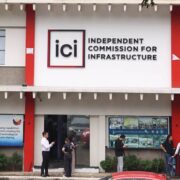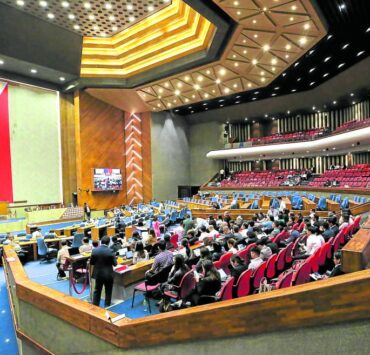Outside NCR, six local economies stand out
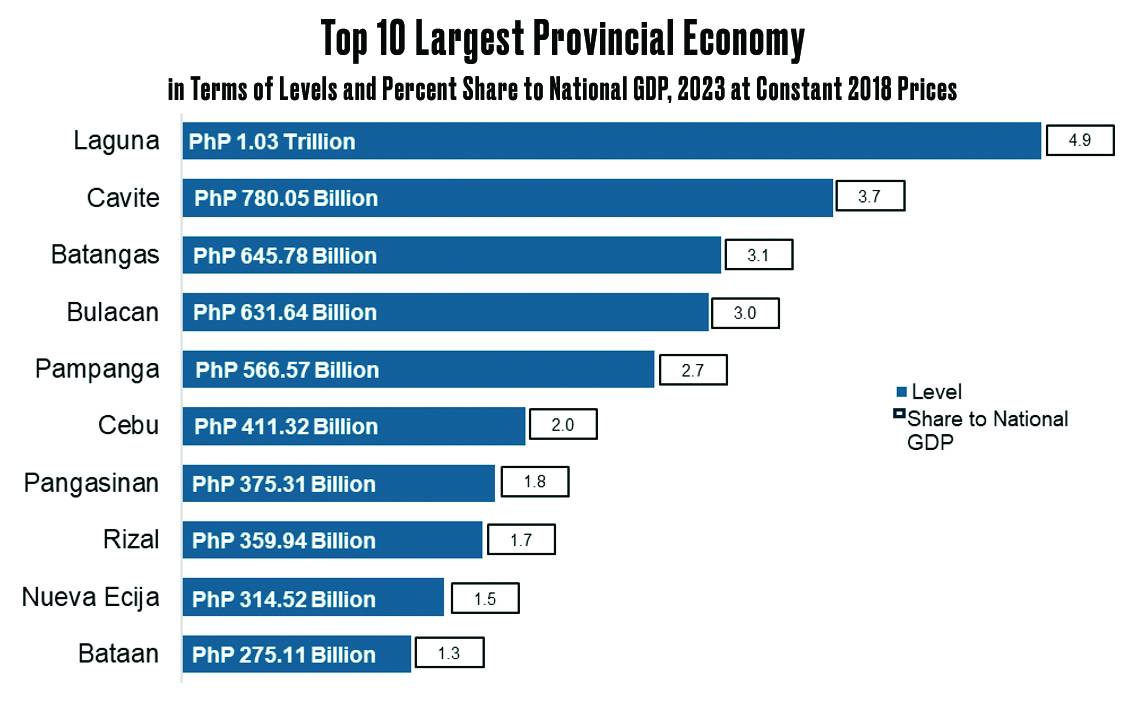
- Bataan, Laguna, Batanes, Pampanga, Misamis Occidental, Batangas — in 2023, these six provinces stood out among the 82 provincial economies tracked by the PSA, with incomes that exceeded the national average.
- While the smaller populations in provinces can magnify their per capita GDP, the top provincial economies are host to vibrant sectors with growing investments and market size.
- But despite being richer than most provinces, PSA data showed that the per capita GDP of the six provincial economies was still far below that of the NCR, which stood at P460,969 in 2023.
People in six provinces may be considered better off than others in terms of income, although they have yet to catch up with those in Metro Manila, according to the government statistics agency.
Data released by the Philippine Statistics Authority (PSA) showed that, in 2023, Bataan, Laguna, Batanes, Pampanga, Misamis Occidental and Batangas recorded a per capita gross domestic product (GDP) that exceeded the national average of P186,476.
The six stood out among the 82 provincial economies tracked by the PSA.
GDP per capita divides the value of economic output with the population. It is typically used to measure how economic wealth is distributed among people.
Leading the pack was Bataan, which had an estimated per capita GDP of P314,641 in 2023.
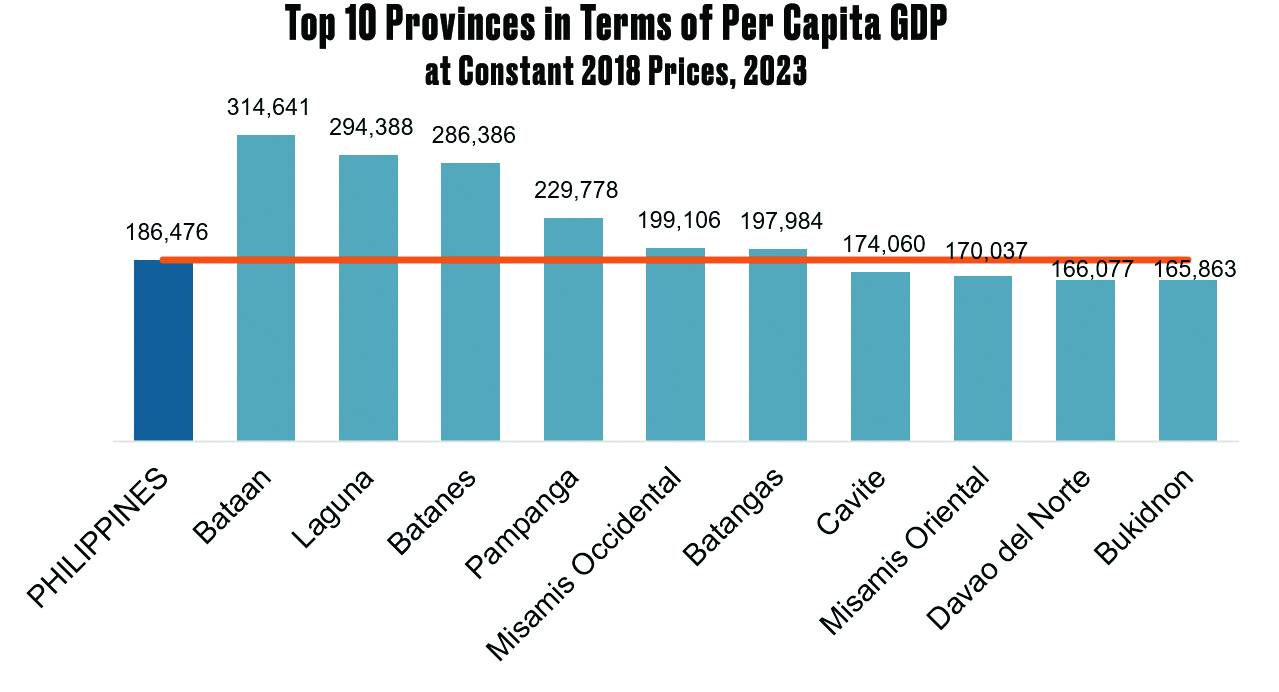
It was followed by Laguna’s P294,388 per head, which it achieved after becoming the only province with an economic value that surpassed the trillion-peso mark that year, at P1.03 trillion.
Batanes, which recorded the fastest growth among the provinces in 2023 at 14.5 percent, came next with a per capita GDP of P286,386.
Completing the list were Pampanga (P229,778), Misamis Occidental (P199,106) and Batangas (P197,984).
Host to business hubs
While the smaller populations in provinces can magnify their per capita GDP, the top provincial economies are host to vibrant sectors with “growing investments and market size,” said Cid Terosa, economist at the University of Asia and the Pacific (UA&P).
Improved transportation and increasing trade linkages are also helping these provinces make bigger contributions to the country’s overall economic output, Terosa added.
“Bataan, Laguna, Pampanga and Batangas are business hubs and economic dynamos of the most dynamic regions outside of the NCR (National Capital Region), namely Calabarzon (Cavite, Laguna, Batangas, Rizal, Quezon) and Central Luzon,” Terosa said in a text message.
“Batanes’ booming tourism industry due to greater transportation options to the province has definitely raised its level of domestic production. Aside from a smaller population base, Misamis Occidental has growing inter-provincial trade with Misamis Oriental, Davao Region and Visayan provinces,” he added.
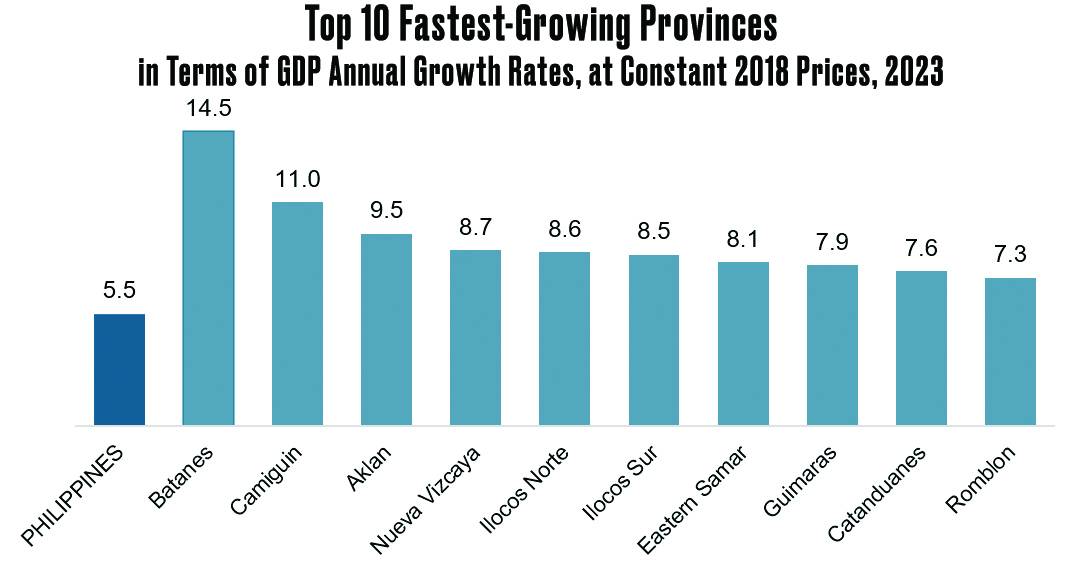
Still ‘Manila-centric’
But despite being richer than most provinces, PSA data showed that the per capita GDP of the six provincial economies was still far below that of the NCR, which stood at P460,969 in 2023.
Notably, none of the six provinces had an income level that was near Makati City’s P1.8 million GDP per capita, the highest among the cities in the capital region.
For UA&P’s Terosa, the latest data meant that local economic development in the Philippines remained “lopsided,” but added that there were “pockets of growth” waiting to be tapped outside of the capital region.
“Policymakers should put in place greater institutional, infrastructure, and market support for thriving local economies,” he noted.
“Specifically, policymakers should aim to improve local governance, expand infrastructure and transportation networks, and help craft a framework to guide local business and investment incentives,” he added.
Food inflation
Leonardo Lanzona, economist at Ateneo de Manila University, noted said the provinces enjoyed the main advantage of having “very strong linkages” to agriculture, which made them less vulnerable to high food inflation compared to NCR.
That said, Lanzona stressed the need for the government to boost the competitive edge of provinces by supporting the local farm sector and not flooding the market with imported food.
“Yes, NCR remains as the richest region in the country. But its growth is hampered by severe supply constraints, particularly in food. Provinces that have strong linkages to agriculture are not hindered by these supply side constraints,” he pointed out.
“The government’s policies to import such products abroad can thus offset this development. In effect, the current policies are proconsumer and antiproducer, which can explain the Manila-centric development in the country,” he added.












